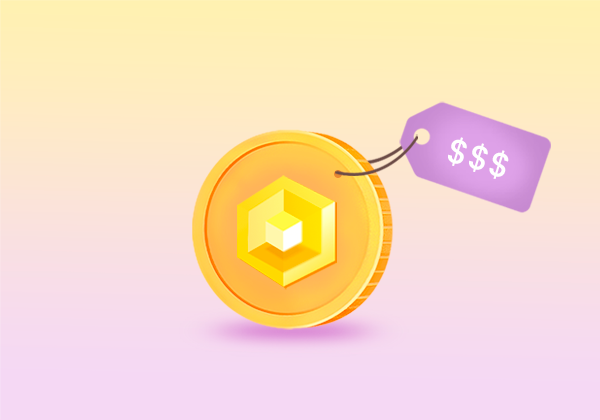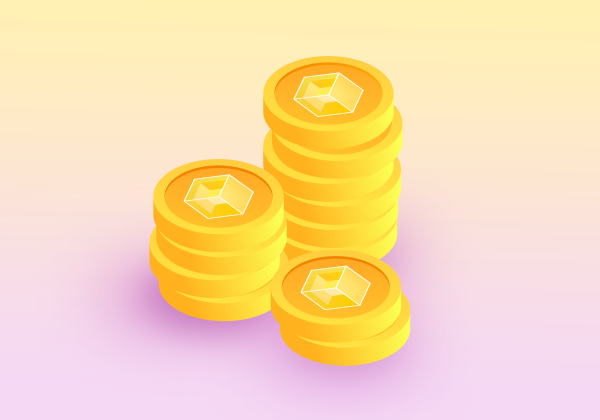
What is DeFi, and What is It Made of?
Decentralized finance (DeFi) was first talked about globally in 2019 when the value of cryptocurrencies skyrocketed. At that time, smart contracts and processes such as ICOs (initial coin offerings) became much more popular. DeFi has already become the main financial tool of blockchain technology, and there is no doubt that Web 3.0 will be based on decentralized financial user apps and services.
Let's jump on board and learn more about the new user experience and unique DeFi applications.
What is DeFi?
Many people are curious about what is DeFi. This term refers to financial tools, services, and applications built on a blockchain. The main goal of decentralized finance is to ensure anonymity, transaction security, and the absence of a central governing body. These apps, including investing, lending, and conducting transactions on the blockchain system, can become an alternative to the traditional banking system and pave the way for new financial instruments.
DeFi Structure
DeFi relies on various technologies developed within the blockchain space, many of which have app beyond decentralized finance but remain vital to various DeFi ecosystems.
Blockchains serve as distributed ledgers that store and record transactions, forming the core of the DeFi. Although DeFi activity is also on the rise on other blockchains, Ethereum's capabilities and popularity among developers make it the preferred network for most DeFi services.
Another essential aspect of the DeFi landscape is digital assets, such as DeFi tokens that can be traded on the blockchain network, representing significant value.
To manage assets that are stored on the blockchain, DeFi relies on wallets or software user interfaces. These tools are crucial for ensuring that users have control over their funds. Non-custodial wallets are especially important, as they give users complete control through private keys. Meanwhile, custodial wallets are managed by third-party operators who hold the private keys on behalf of the user.
Smart contracts are another crucial component of DeFi. These blockchain-based software codes execute, monitor, and document relevant events and actions based on predefined rules and conditions. They power decentralized apps (DApps), which are often integrated with user interfaces using traditional web technologies. They also power decentralized autonomous organizations (DAOs), whose rules are defined and governed by smart contracts.
In addition to wallets and smart contracts, stablecoins are also essential to DeFi. These digital assets are pegged to fiat currencies, a basket of fiat currencies, or other assets with stable prices. They provide stability and predictability to the DeFi ecosystem.
Finally, DeFi control systems use software mechanisms to manage changes in smart contracts and other blockchain protocols. These systems often use tokens that allocate voting rights to stakeholders. Together, these technologies form the backbone of DeFi and enable decentralized financial transactions and services.
DeFi Advantages
Let's take a look at the key benefits of DeFi:
1. Decentralization and Self-Management
DeFi operates without centralized management structures, as business rules are encoded in smart contracts. Once a smart contract is deployed, the DeFi app can operate independently with minimal human intervention.
2. Transparency
DeFi apps are transparent and open for auditing, enabling users to understand the contract's functionality and identify any issues. Transaction activity is publicly visible, with transactions being anonymous by default.
3. Accessibility
DeFi is accessible to any internet user, promoting inclusivity. Unlike traditional finance, no barriers or complex forms are required to use DeFi apps. Users interact directly with smart contracts through their digital wallets.
4. Customizable User Experience
DeFi provides a customizable user experience, where users can apply third-party interfaces or even create their own if they prefer. Smart contracts act as open APIs, enabling developers to build new apps on top of them.
5. Interoperability
DeFi products can be combined to create new apps, such as stablecoins, decentralized exchanges, or prediction markets. This interoperability allows for various combinations of DeFi products, creating a flexible and customizable financial system for users.
DeFi Drawbacks
DeFi is not without its share of risks, including liquidity and credit risks that can result in massive liquidation of assets and potential system collapse due to volatility of underlying assets. To mitigate these risks, DeFi protocols currently provide loans with excess assets, impacting the price of these assets.
While the use of smart contracts in DeFi eliminates the need for trust in humans, there is still a need to trust the smart contract code, which is written by humans and poses a risk of being hacked.
Centralized data oracles pose a vulnerability for DeFi, as they draw data from outside the blockchain, and a malicious oracle can compromise the correct execution of smart contracts. However, decentralized alternatives have already been developed.
DeFi loans, despite their inclusivity, still face the challenge of relatively small loan amounts against appropriate collateral, making them less competitive than loans in the traditional finance sector.
Conclusion
DeFi is gaining momentum, and as users, we still have much to learn about the technology. However, we already see many important applications of decentralized finance. For example, this technology is used to create stablecoins, decentralized exchanges (DEX), peer-to-peer prediction markets, tokenized securities platforms, and crypto asset management projects. Understanding and considering the systemic risks is important so that you, as a user and participant in crypto projects, can benefit.
► Sabai Academy — a place where studying blockchain, crypto, fractional ownership, and real estate investments becomes a catalyst for capital growth!
Sabai Academy
Join our FREE courses and get REWARDS IN CRYPTO!
Related Articles

FULL GUIDE: How to Buy $SABAI token

FULL GUIDE: Staking with Sabai

